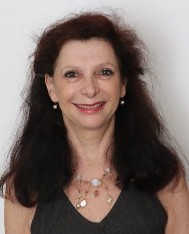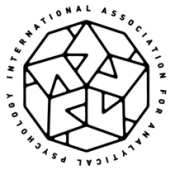
He was one of the first artist knighted by the Art Brut movement.
Brigit Soubrouillard
Image
If Freudian psychoanalysis is centered on words as a representation of conscious and unconscious experiences, the Jungian approach considers images as the primary access to the unconscious. In that sense, images constitute a form of language that, in the process of analysis (or personal work), we strive to relate to and to understand.
Producing, relating to, and interacting with images is peculiar to humankind, the only animal to create art since the dawn of humanity. Our psyche is made of images to which we can have partial access in our dreams, via active imagination or when observing spontaneous expressions of the psyche. At the same time, the encounter with external images can also serve as a mirror or a sounding -board to reveal and shed light on our inner images.
Jung noted the recurrence of certain images that he observed in himself, in his patients, in ancient art, and in myths and fairy tales. He postulated that we all have a common experience of universal images, shared since primordial times (referred to as “Urbild” in German), which he called archetypal images.
For Jung, these images are the expression of universal patterns that he names “Archetypes” (“Archetypus an sich” in German). These archetypes structure the psyche.
We cannot access the archetypes directly, but it is through the archetypal images that we can discern the dynamics of the archetypes. For instance, a young helpless but numinous baby in a dream might be the expression of the activation in the psyche of the Divine Child archetype, a motif found in many myths and fairy tales.
Jung noticed early on, that among all the multiple types and forms of images observed in the psyche, some refer to the unconscious perception the subject has of his/her intimate environment such as Mother, Father, Teacher, God… He coined the term IMAGO to designate these seminal images (“Vorbild” in German).
For instance, the experience of the mothering we received from our personal mother (and/or other care givers) will shape the representation we have of the Mother archetype. Other factors such as our cultural and social environment will also color that representation. Jung used the term “Mother Imago” to designate such a major intrapsychic representation.
When we contemplate our inner images (such as in dream work, active imagination, sandplay, art production, etc.), our ego is able to become aware of what lies in the psyche. The second step then, is to enter into a relationship and to interact with these images and these sectors of the psyche. Ultimately, this dialectical movement between the ego and the unconscious and the remote sectors of the psyche produced by the confrontation with inner images, will lead to the process of individuation.
Hopefully such an awareness of, and confrontation with inner images, will help to transform inner contents of the psyche. And with time, inner images will evolve, reflecting this transformation.
When a person is unable to access their inner images (for instance, if the person does not dream or is not ready for other forms of symbolic work), starting with external images can bring a certain level of awareness of their inner world. For instance, when pictures in advertisements arouse reactions in us, when a film or a novel triggers strong emotions, or when images in the News produce a considerable effect, we can postulate that they mirror our inner situation. In that sense, being mindful of the effect of external images can facilitate awareness of and access to our intrapsychic world.
Post-Jungian authors have pointed out that classical Jungian approaches have excessively focused on “big images”, on images pointing to those major archetypal figures described by Jung. In doing so, we may have neglected other images in the psyche. As Jungian psychology expands globally, we must be careful not to approach images in a Western and patriarchal – centered way and make sure that we invite, assess and value all images that are manifested in the psyche.
Another limitation would be to reduce the concept of images to their pictorial or visual manifestations. For Jung, the image is a broader and larger representation encompassing visual, auditory, olfactive, and cenesthetic dimensions.
Thus, we also need to consider other forms of images such as auditory images (in music or in poetry for instance), or sensory images (such as in dance and other performing arts).
Another Western bias in working with images is the overemphasis on the narrative conveyed by the image and neglect of the “taste” or the “atmosphere” surrounding or underlying the image. For instance, when remembering and noting down a dream, the overall ambiance given by the light, the rhythm, the tempo, the colors etc., are no less important than the dream narrative itself, as they form a totality with the narrative.

Brigit Soubrouillard currently lives and works in Alsace, France, next to Germany and Switzerland. She holds a PHD in Clinical Psychology from the Pacifica Graduate Institute in California. At the CG Jung Institute in Küsnacht she has graduated in the double program for Adults and Children & Adolescents.
She is a former President of the SFPA, the French Society for Analytical Psychology, and is currently serving her second term on the IAAP Executive Committee. She has been teaching and lecturing in many countries. She is the current liaison person for the IAAP Hong Kong Developing Group.
Brigit is passionate for Outsiders Art, which she been collecting and lecturing on for many years. She is also very
interested in various contemporary postmodern issues and how these issues were already heralded in the myths from the 17th and 18th centuries.

